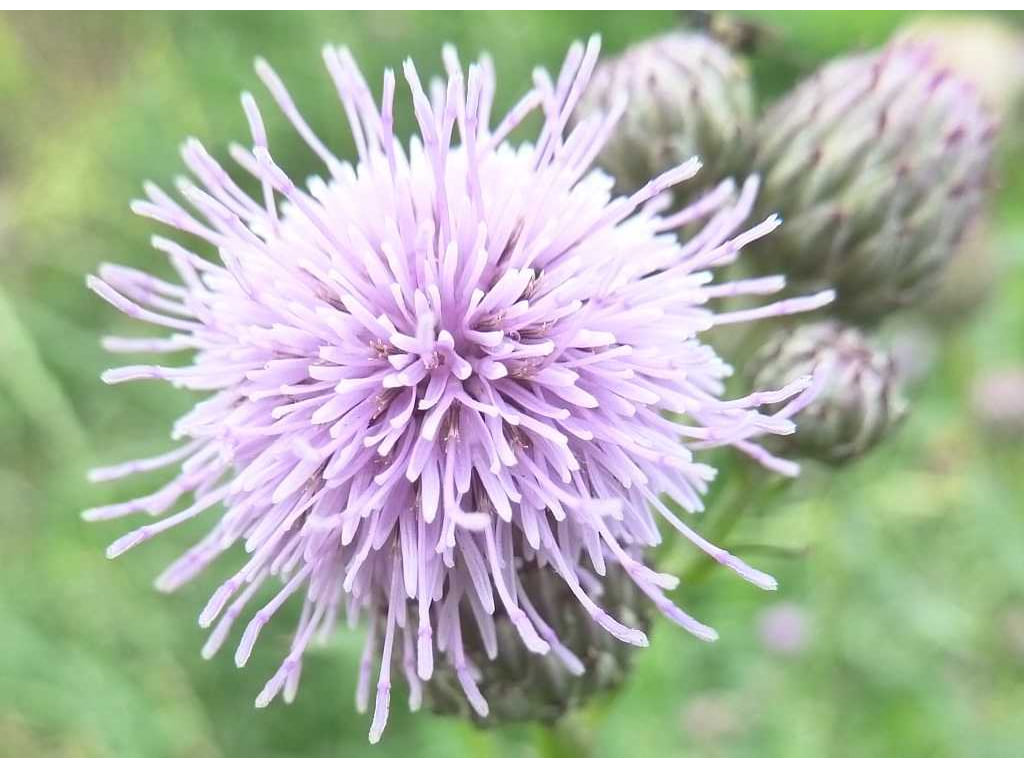The Right By Way Of The Wrong
There used to be a division on our little Perma Farm. The southern half was full of Canadian Thistle, while the northern half was free of it. Why the difference? Tilling.
"Life: an unfolding set of opportunities to awaken."
When we started out, all we had in our minds was the traditional way of growing things. We started on the southern half and we tilled the ground into nice beautiful rows. We planted these and watched as the sun scorched the Earth. Then within a few days the ‘weeds’ flooded in. The northern half though, was left as we found it, already covered with Grass, Clover, Dandelion, Plantain, Henbit, Creeping Charlie, Alfalfa, and Purple Dead Nettle.
"Nature has a tremendously balanced rhythmic normalcy in her orderly processes of creation. It is all of it good for man and animal alike when they observe that normalcy. When they defy it, or violate it through ignorance of it, Nature does not punish them for that violation. Ignorance punishes them."
What we only learned much later was that Canadian Thistle is not a weed, rather it is a very important healer. Our little piece of land had already formed a healing scab, as it had long ago lost its trees and been overused as pasture, crop land, and then a lawn. The scab was the thatch layer of those plants mentioned above that covered the soil year after year. In tilling a section of this land, we literally pulled this scab of healing plants off the Earth.
"The universe is not so much vindictive, as it is corrective."
We all know that picking a scab will only delay the healing process. In our human bodies, when there is tissue damage to the skin, a response is triggered that causes rapid blood clotting and a rush of healing cells to the injured area. When this scab is removed, we are literally interfering with the healing process.
"Perhaps separation is not an evil, but rather an adventure of self discovery."
So too with the Earth. The problem was not the emergence of Canadian Thistle. That was the solution. The problem was our unbalanced story of separation and control and how food is grown. That is what needed to be eradicated.
Every plant has a purpose, and the Canadian Thistle’s purpose is to heal. When the healing layer of thatch that keeps the soil surface moist is taken away, you are left with soil exposed to the sun. This causes excessive runoff and evaporation. Before long the soil will inevitably deteriorate into something akin to hard pan clay. The Earth must respond if it is to survive, and so a response is triggered. In our particular case the Canadian Thistle was called on to provide its healing powers.
"The Leaver life-style is not about hunting and gathering, its about letting the rest of the community live, and agriculturalists can do that as well as hunter-gathers. Its not the answer but its a step in the right direction, for there is no escape, there is no jungle to run to, at best since we have destroyed all of nature, we must actively participate in its renewal."
The powers of the Canadian Thistle include an impressive taproot that can penetrate into the Earth at depths over six feet. This pulls up moisture and nutrients into its vigorous growing top. This tap root is perennial and will send out a multitude of lateral shoots. These eventually go vertical and send up a mass of stalks that can reach over 5 feet tall. These stalks are covered in spiny leaves that say to all who come near, “There is healing going on here, so please walk softly.”
At the end of the growing season you are left with a network of tunnels in the soil that improve aeration and water penetration, as well as a new layer of thatch from the bent over stalks, adding much needed biomass to the depleted soil. This in turn creates the right conditions for the next phase of healing to begin.
"We but echo forces of thought long since put into motion, woven into our very neural processes of brain. An inherited cultural mind set building over milennia lies behind our ever increasing acts of violence to our Earth and to another. An unconscious cycle, but one that can be broken by conscious action."
We do not need to eradicate the Canadian Thistle, we do not need to pass laws that impose heavy penalties to those who neglect to destroy Thistles on their property. (Yes there really are laws out there against the Thistle). Instead we need to eradicate our ongoing story of separation and control. The ‘weed’ problem of the Canadian Thistle will only persist if we fight it, because in reality we are not fighting this ‘weed,’ rather we are fighting our own ignorance. What we despise in others is usually what we secretly despise in ourselves.

